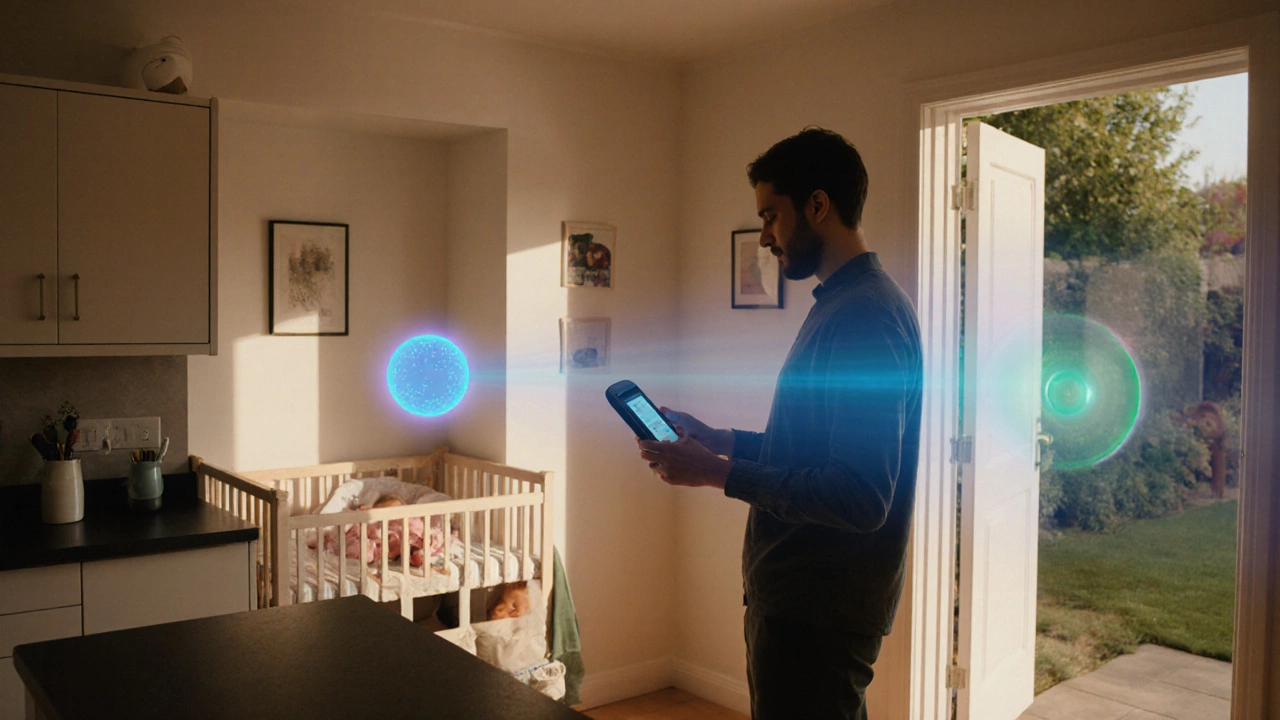When you hear the term Wireless Baby Monitor, a battery‑powered device that streams audio and/or video of a infant’s room to a parent’s smartphone or dedicated receiver. Also known as cordless infant monitor, it lets parents keep an eye (or ear) on their child from any room in the house.
These wireless baby monitors rely on Wi‑Fi, the wireless networking standard that lets devices exchange data over short distances to send live feeds to your phone. The connection is usually encrypted, but the strength of that encryption depends on the router and the monitor’s firmware. A strong Wi‑Fi link means clear video, less lag, and lower power consumption, while a weak link can cause choppy streams and higher battery drain. That's why many experts recommend a dedicated 2.4 GHz band for infant monitoring – it penetrates walls better than 5 GHz and keeps the feed stable.
Another piece of the puzzle is the motion sensor, a detector that triggers alerts when movement is detected. Modern monitors pair audio with motion detection to alert you only when something changes in the crib, reducing false alarms caused by background noise. Some models even combine infrared night‑vision with motion triggers, so you get a clear picture whether it's nap time or night time. The sensor’s range, sensitivity, and field of view are key specs to compare when you shop – a narrow view might miss a rolling baby, while a too‑broad view could pick up unrelated hallway traffic.
First, check the battery life. A monitor that lasts 10 hours on a single charge is fine for daytime use, but most parents need 24‑hour coverage. Look for models with low‑power standby modes and optional AC adapters.
Second, examine the video quality. 720p is the baseline now, but 1080p offers sharper detail for facial recognition. Night‑vision should use infrared LEDs rather than visible light so you don’t disturb sleep.
Third, consider privacy controls. End‑to‑end encryption, password‑protected access, and the ability to disable cloud storage are must‑haves. If the monitor uploads footage to a server, you’ll want to know where that data lives and how long it’s kept.
Finally, think about integration. Many parents already have a smart home hub, so a monitor that works with Alexa, Google Assistant, or Apple HomeKit can be controlled by voice or placed into automation routines (e.g., turn on a night‑light when motion is detected).
All these aspects tie back to the main idea: a wireless baby monitor encompasses reliable audio/video streaming, requires a solid Wi‑Fi link, and benefits from smart motion sensors to reduce noise. The next section of this page will walk you through real‑world scenarios, common pitfalls, and the latest models that nail these criteria. Ready to dive deeper? Let’s explore the tips, tech, and safety checks that will help you pick the perfect monitor for your family."

Learn how far baby monitors really reach, how to extend their range, and what tech, placement, and troubleshooting steps ensure reliable coverage throughout your home.